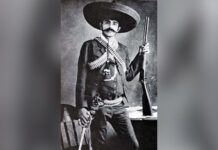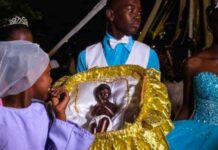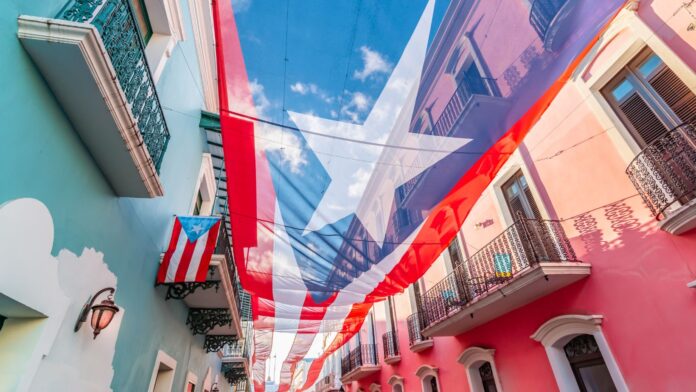This article was originally published on February 17th, 2020.
Do you ever feel like engulfing yourself in poetry that tugs at your heart with each stanza? Or how about getting lost in fierce poetry that transcends time? Well, Puerto Rico has got you covered. As you may know, La Isla del Encanto or Enchanted Island has a lot of wonders to offer the world. One of those wonders happens to be Julia de Burgos. She is considered to be one of Puerto Rico’s greatest poets and is highly regarded by Latin American literature. Aside from being a poet, she is also known for being a civil rights activist for women and Afro-Caribbean writers.
In a very Latinx manner, Julia de Burgos was actually born with a longer name — Julia Constancia Burgos Garcia. She was born on February 17th, 1914 — into poverty — in Carolina, Puerto Rico. Her father owned a farm and also worked as a member of Puerto Rico’s National Guard. Her mother was a stay-at-home mom who looked over the children. Despite her family’s economic hardships, her parents had many children, making Burgos the eldest out of 13 children at some point. Later on in her life, de Burgos would witness six of her siblings passed away due to malnourishment.
Since de Burgos was the eldest child, her parents gave her the privilege of education (the other children didn’t get this opportunity). However, she took advantage of this and took a liking to learn early on. Her dedication to learning was so great that she won a scholarship to one of the best high schools of her time, University High School. Having had supportive parents, the family relocated to Rio Piedras, Puerto Rico to facilitate their daughter’s path to success.
Throughout her time at University High School, she acquired a great admiration for classical literature and poetry. Some of her early influences were by Pablo Neruda, Clara Lair, Rafael Alberti, among other reputable names of the literary world. Living in Rio Piedras eventually prompted de Burgos to write her first poem, which later became known as one of her most distinguished poems, Rio Grande de Loiza. This poem is still a literature staple in literary history and classrooms all through Puerto Rico and other parts of Latin America.
Once she graduated from her prestigious high school, she enrolled at the University of Puerto Rico in Rio Piedras and pursued a degree in teaching. She earned her degree in 1933 at the mere age of 19 and went to teach an elementary school in Naranjito, Puerto Rico.
Her profession didn’t stop her from writing. She continued penning her thoughts while simultaneously working at the school in hopes to be published one day. Her efforts came through because that day did come. De Burgos became a published writer in the early 1930’s.
She made a name for herself writing in journals and newspapers. However, she was set on publishing books, so she focused plenty on that. After so much dedication, she was finally able to publish her first two books several years later, all of which was a collection of poems.
She promoted these two books by touring Puerto Rico on her own. Without missing a beat, she’d read her poetry to whoever was willing to listen. Her goal was to become recognized by Puerto Rico and later on at an international level. De Burgos’ mentality definitely kept her on the right track for some time.
After having had some success with her writing, she was interrupted by love.
In 1934, she met her first husband, Rubén Rodríguez Beauchamp. He was the person who piqued her interest in civil rights work. By 1936, she had already become a member of the Puerto Rican Nationalist Party (Partido Nacionalista de Puerto Rico), which later took her to be elected as the Secretary of the Daughters of Freedom, a chapter dedicated to Puerto Rican Nationalist women. Unfortunately, she didn’t get to experience her new role as a civil rights activist for long with her husband because they got a divorce a year later.
Being the strong woman that she prided herself on being, she refused to mourn her divorce for long. Instead, she quickly entered in an impassioned romance with Juan Isidro Jiménez Grullón, a Dominican historian, physician, philosopher, educator, and politician. She followed Grullón wherever his work affairs called, leading her to end up in Havana, Cuba at some point during their relationship. While in Cuba, de Burgos enrolled for postgraduate studies in the University of Cuba. That was cut short when Grullón was called to work in New York. Being so in love with Grullón, she blindly followed him to New York as well. She worked as a journalist for a progressive newspaper, Pueblos Hispanos, during her time in New York.
Once his Grullón’s duty was completed in New York, they both returned to Cuba. But, their love didn’t prosper as it once did in Cuba this time around. They allowed their love to dissipate and both went their separate ways. Julia de Burgos went back to New York after this heartbreak. She ended up working random jobs in order to make a living for herself. Though their love ended, de Burgos later immortalized their romance through her poetry. In fact, Grullón’s influence became significant to de Burgos’ writing in the future.
Even through this time of pain, de Burgos continued writing. She never left her talent or passion for writing on the back burner. Since she was already a seasoned writer for magazines, she published a few poems during those times, including Ay, Ay, Ay de La Grifa Negra and A Julia de Burgos on January of 1939 in the magazine Puerto Rico Ilustrado. She was also able to acquire a Puerto Rican literary prize for her second collection of poems, Canción de la Verdad Sencilla (Song of the Simple Truth), in July of 1940.
A Julia de Burgos
“Tú eres sólo la grave señora señorona; yo no,
yo soy la vida, la fuerza, la mujer.”
To Julia de Burgos
“You are merely the implacable, elegant lady;
Not I; I am life, I am strength, I am woman.
Her writing kept Julia de Burgos going, but she was also a hopeless romantic, so she never experienced much absence of love. Well, maybe it wasn’t all love per se, but at least she constantly had some sort of intoxicating romance present in her life. This seemed important to de Burgos. Perhaps this is why she was quick to find a new romance while living in New York. She had the good fortune of stumbling on a fellow Puerto Rican man in New York, more specifically from Vieques, Puerto Rico, and she fell for him as well. He was a musician named Armando Marin. They got married in 1943, but it didn’t last for long. Their marriage also ended in a divorce.
Her various failed attempts at love and companionship could’ve ignited the beginning of her demise. Depression followed suit after feeling she was unsuccessful at love, which eventually caused her to become an alcoholic. Nevertheless, her poetry became her main consolation during these low moments. She particularly wrote about social justice and feminism when she decided to stay and live in New York, and was integral in defining Puerto Rican identity, even away from her homeland. “She already envisioned an idea of Puerto Rico and Puerto Rican identity that was much broader than what was being articulated on the island at the time,” said biographer Vanessa Pérez Rosario in de Burgos’s New York Times obituary, published only recently as part of the publication’s “Overlooked No More” series that honors pivotal figures whose contributions to history have been, well, overlooked. (Unsurprisingly, many of those figures are women and people of color who have been left out of our history books.)
Following her bouts of depression and alcoholism, de Burgos became an isolated woman. She became accustomed not to tell anyone of her whereabouts and lived life in an unattached manner all throughout New York. Although, this did pose some risk to herself. That’s one of the reasons why her ending was so tragic.
After leaving a relative’s house in Brooklyn on June 28th, 1953, de Burgos never went home ever again. Her family and friends became worried and wondered what had happened to their beloved Julia de Burgos. They became worried and notified the authorities. Shortly after, on July 6th, 1953, their worst nightmare was confirmed — Julia de Burgos had died.
Apparently, her death was caused when she collapsed on a sidewalk while she was walking in Spanish Harlem. When she was found, she was rushed to the hospital, where the doctors discovered she had pneumonia. At that point, her pneumonia was too aggressive, so they couldn’t do much for her. She passed away a few days later in the hospital.
It took so long to find her because when de Burgos passed away, she wasn’t carrying any identification on her. So, the doctors buried her under the name “Jane Doe” at a public cemetery in Hart Island. Once her identity was confirmed, de Burgos’ family demanded for her body to be unearthed and sent over for a proper burial in her birth place, Carolina, Puerto Rico. Julia de Burgos was 39 when she departed from this world.
De Burgos wrote her third collection of poems, El Mar y Tu: Otros Poemas (The Sea and You: Other Poems), before her sudden death. It was posthumously published in 1954. Other collections of poems and letters that were found were also published in later years. Colección Clásicos Huracán holds one of my favorite poems by her, Yo Misma Fui Mi Ruta (I Was My Own Route), which was published in 1986.
Julia de Burgos has been survived by her poetry and fiery passion to live life on her own terms. She used her voice to shine a light on injustices while maintaining her vulnerability. Her writing has definitely been one of the greatest gifts Puerto Rico could’ve given the world. Go on and read a few of her writings and let us know which one you liked best. I’ll leave you with a stanza of my favorite one below.
I Was My Own Route
“I wanted to be like men wanted me to be:
an attempt at life;
a game of hide and seek with my being.
But I was made of nows,
and my feet level on the promissory earth
would not accept walking backwards
and went forward, forward,
mocking the ashes to reach the kiss
of new paths.”
Yo Misma Fui Mi Ruta
“Yo quise ser como los hombres quisieron que yo fuese:
un intento de vida;
un juego al escondite con mi ser.
Pero yo estaba hecha de presentes,
y mis pies planos sobre la tierra promisora
no resistían caminar hacia atrás,
y seguían adelante, adelante,
burlando las cenizas para alcanzar el beso
de los senderos nuevos.”
For Image credit or remove please email for immediate removal - info@belatina.com







































